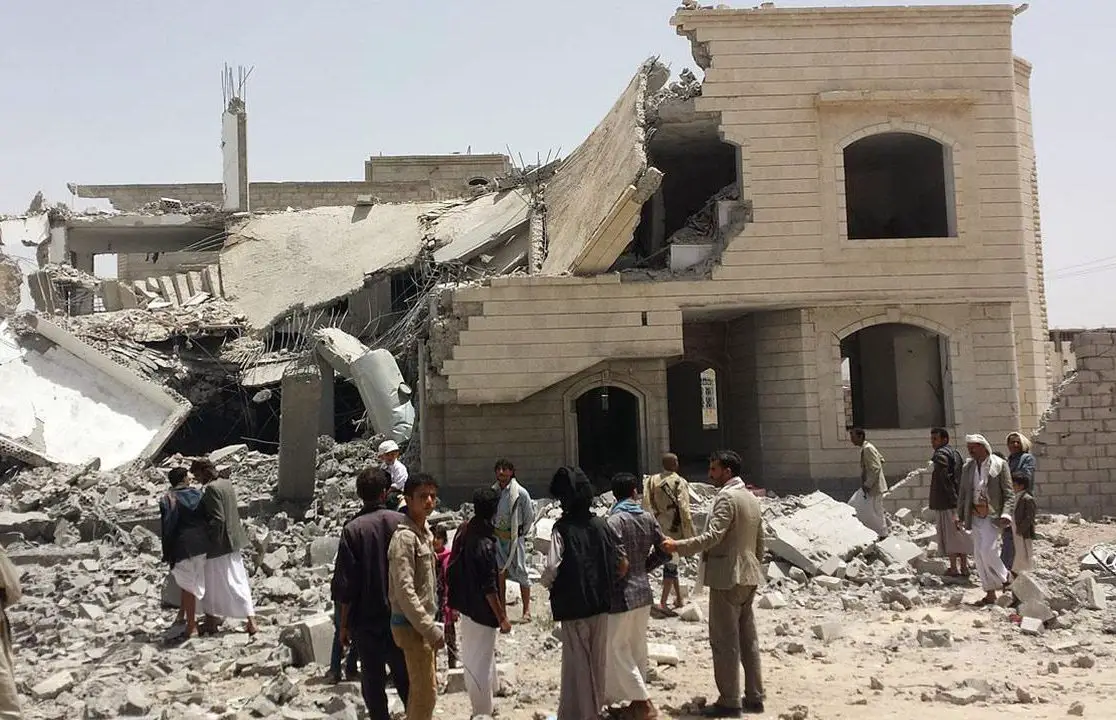If there is one thing to take away from the ongoing civil war in the Middle Eastern country of Yemen, it is that the civilian population is facing a unbelievable crisis. Of the country’s 28 million people, 20 million are facing severe food shortages, and more than a million Yemenis have contracted cholera in the largest ever recorded outbreak of the disease.
As the conflict has escalated, the situation for civilians has also become more bleak. A statement from the United Nations’ Humanitarian Coordinator for Yemen, Jamie McGoldrick, paints a dire picture of the situation, highlighting that millions of Yemenis are facing famine-like conditions, starving to death as a result of the conflict, which began in 2015.
With the situation worsening, it is important to understand the roots of the conflict in Yemen and how the United States current policy towards Yemen is only exacerbating the number of civilian casualties.
The Yemen Civil War: Background
The root of the civil war has its beginnings with the 2011 Arab Spring, which saw citizens throughout the Middle East and North Africa (MENA) protest against authoritarianism, corruption and ultimately for changes in governmental power.
In Yemen, citizens called for the ousting of President Ali Abdullah Saleh, who was backed by the United States and Saudi Arabia. Saleh eventually transferred power to Abd Rabbuh Mansur Hadi. However, shortly after, Houthi rebels overran the capital of Sanaa in late 2014.
According to Al-Jazeera, the Houthis began as a movement in the 1990s that follows the Zaydi sect of Shia Islam, which is the minority Islamic sect within Yemen. A majority of the population follows Sunni Islam.
The New Yorker reports that Salafi Islam, a form of Sunni Islam, is a popular doctrine in Yemen but often comes into conflict with the Zaydi sect. The Houthis have waged war against the Yemeni government for years, but both the size of the group and its conflict with the government swelled after the Arab Spring.
The Houthis have also come into conflict with Saudi Arabia, which neighbors Yemen. The Saudi government officially recognizes Wahhabism, an ultraconservative branch of Islam closely aligned to Salafism, placing the Zaydi Houthis in opposition to the Saudi government.
The links between the Houthi rebels and Shia-majority Iran have also raised the ire of the Saudis, further complicating the sectarian nature of the Yemen conflict.
The Impact of Saudi Arabia in Yemen’s War
In March 2015, Saudi Arabia began a bombing campaign with the intent of providing support to Hadi’s internationally recognized government.
However, it is widely reported that a majority of the civilian deaths have been tied to the Saudi Arabian campaign, with a late-2016 article in Reuters noting that more than half of the civilian deaths have been attributed to the bombing. In total, the war has killed an estimated 13,500 civilians, a majority of those through the Saudi-led airstrikes.
Although the airstrikes have directly killed civilians, they also serve a more insidious purpose: creating long-term famine conditions. In an interview with Salon, Martha Mundy of the London School of Economics said that the Saudi campaign is “deliberately targeting Yemen’s tiny agricultural sector in a campaign which, if successful, would lead a post-war Yemeni nation not just into starvation but total reliance on food imports for survival.”
The campaign has bombed bridges, roads, ports and other forms of access to food supplies that have had serious impacts on the ability of civilians to receive aid. As Yemen is heavily dependent on imports to feed its population, the damages to key supply ports has worsened food insecurity in the country, leaving millions hungry.
The bombing has also created challenges for aid workers attempting to distribute food. Damaged roads make it nearly impossible for aid workers to travel to those in-need of aid, and, if workers are able to travel, the constant threat of airstrikes place their lives in danger.
Without the ability to move freely through the country, the effectiveness of transporting aid is severely weakened, and civilians are losing their lives as a result.
The United States and Saudi Arabia: A Dangerous Alliance
The Saudi-led campaign can attribute some of its effectiveness to the backing it receives from the United States. Although not officially a partner to the Saudi-led coalition, the United States has been critical in providing material and logistical support to Saudi Arabia since the beginning of the civil war.
In 2015 alone, the United States provided $20 billion worth of support to Saudi Arabia with many of the arms deals between the United States and Saudi Arabia going towards the war efforts in Yemen.
The Obama Administration assisted in providing missiles to the Saudis and provided aircraft support to refuel Saudi aircrafts that were used in bombings.
After U.S.-made cluster bombs were found to have been used in multiple airstrikes with civilian casualties, including a bombing that killed 140 funeral-goers, President Obama scaled back U.S. support for the Saudi coalition by halting sales of cluster bombs and precision guided missiles. The Administration cited “systemic, endemic” concerns with the way the Saudi coalition was using American weapons against the civilian population.
However, the Trump Administration seems eager to reinvigorate the United State’s support of Saudi Arabia’s airstrikes efforts. In May 2017, Trump signed a $110 billion arms deal with Saudi Arabia to supply the country with various military equipment, including artillery, helicopters and missiles.
In addition to that deal, the United States sold $650 million in weapons to Saudi Arabia in 2017 through the State Department’s Direct Commercial Sales Program, which allows American arms companies to sell directly to foreign customers.
The uptick in arms sales has been heavily criticized within the international community due to the indiscriminate nature of which the Saudi coalition has been using the types of weapons that are now being sold to them.
The precision-guided weapons have been previously used in attacks against Yemen’s civilian population, and international groups are concerned that the United State’s support will continue to foster human-rights abuses conducted by the coalition.
The Saudi-led bombing campaign is threatening to completely destroy the population of Yemen, either directly through the airstrikes or through the exacerbation of ever-worsening famine and disease, and the United States is encouraging the coalitions’ complete disregard for life. The United States needs to immediately halt all forms of weapons sales to the coalition and stop being complicit in a humanitarian disaster.

















